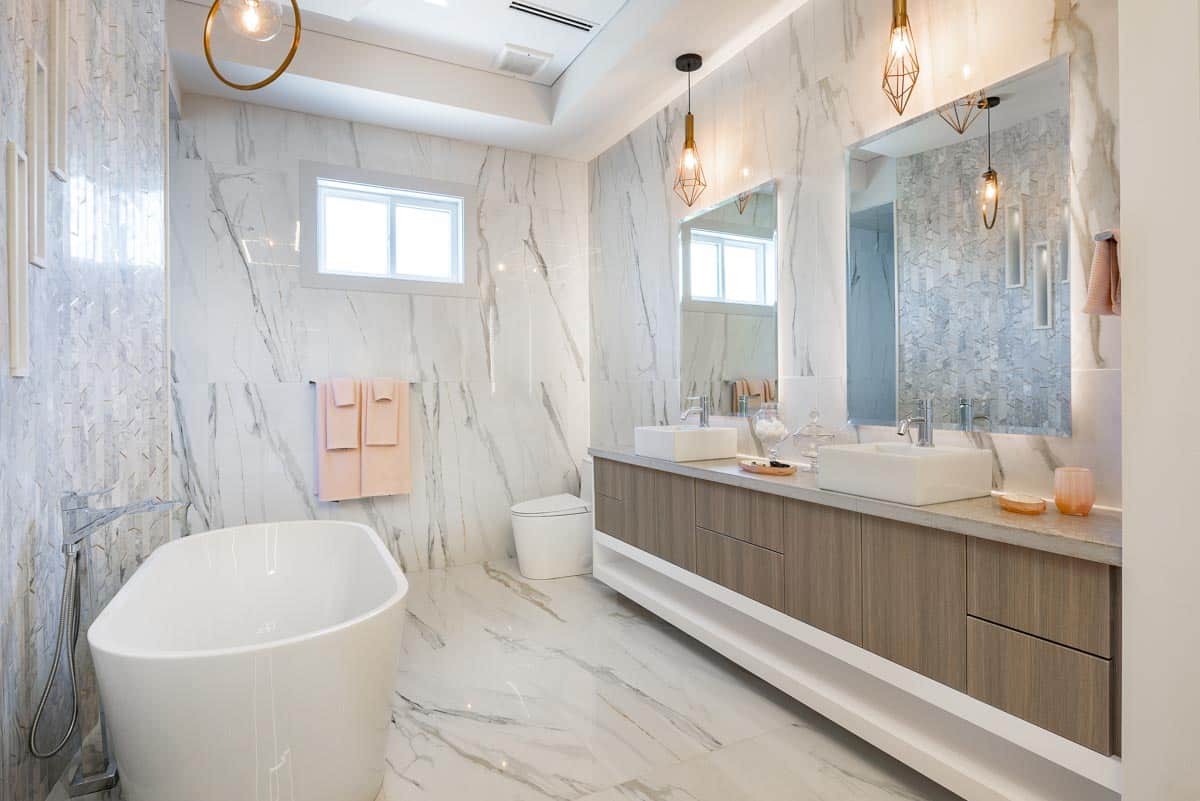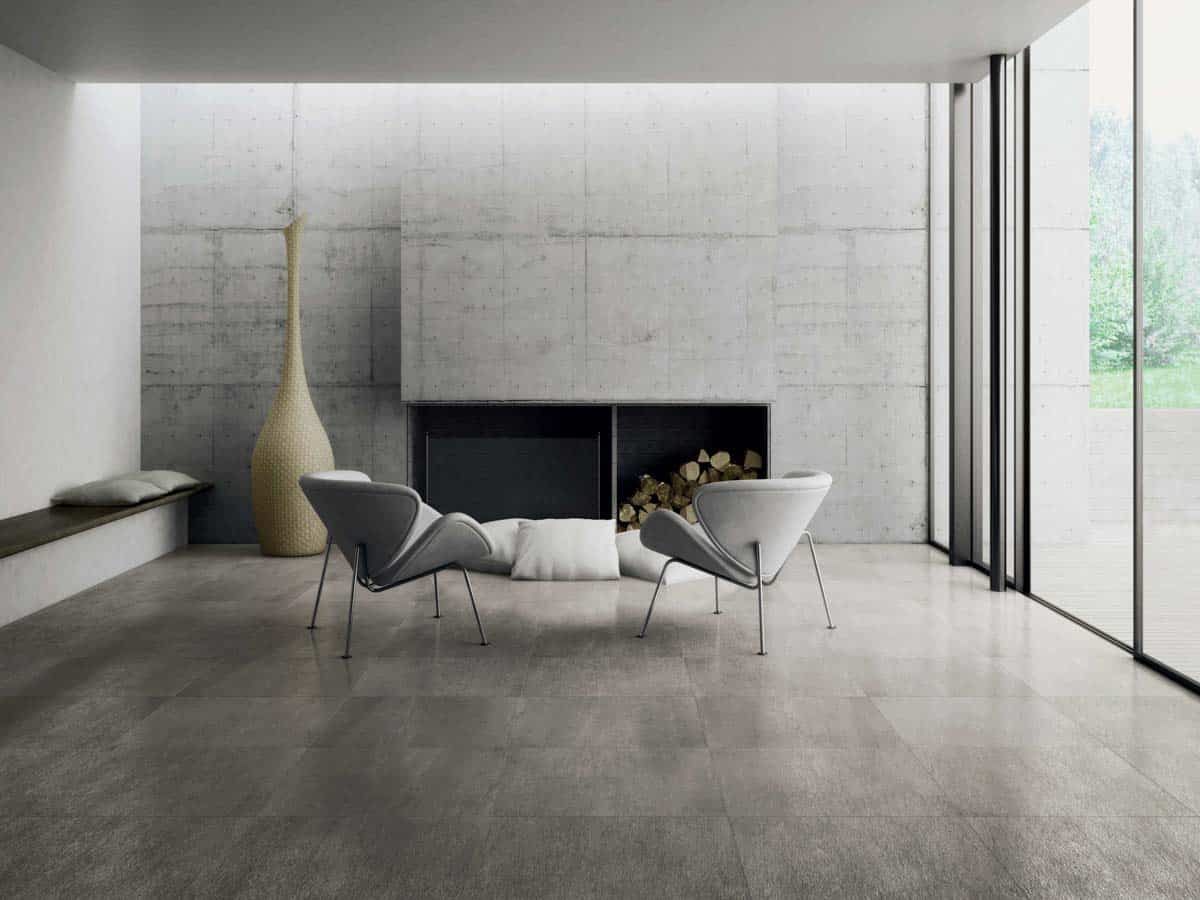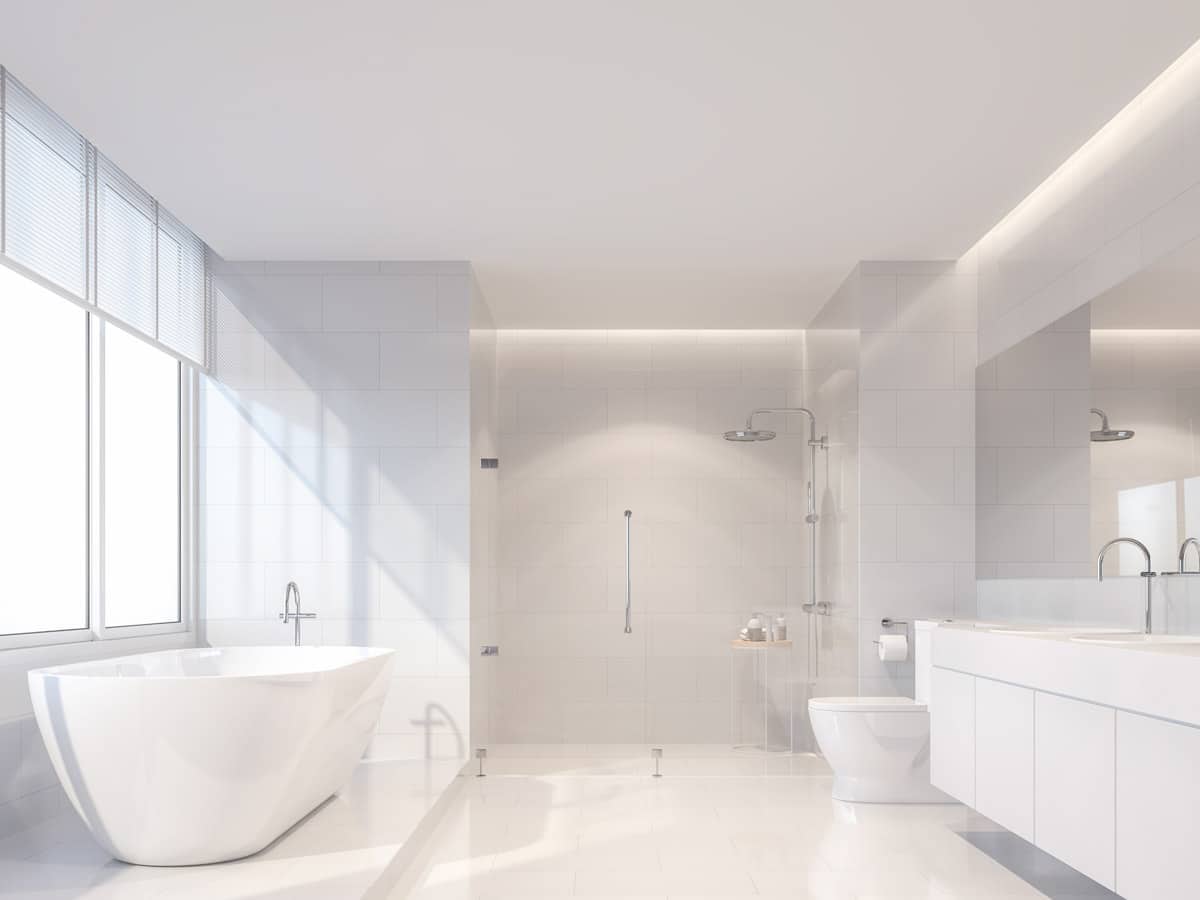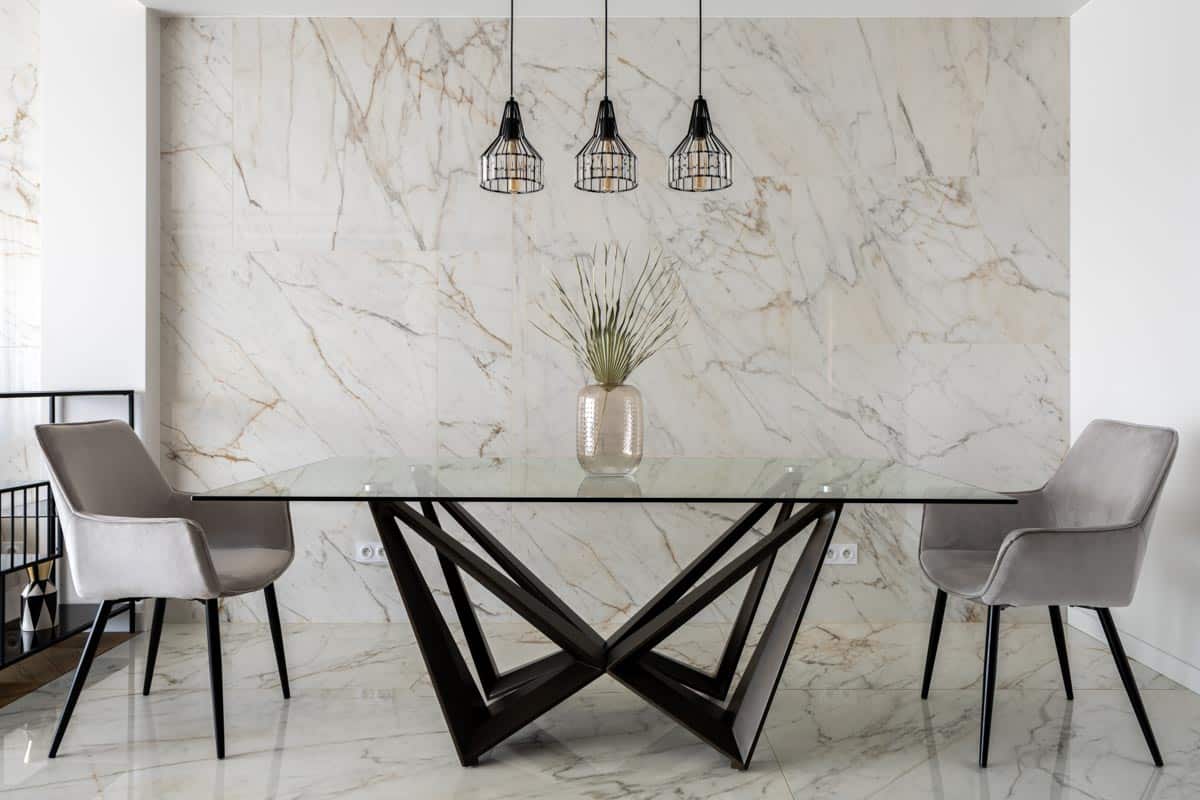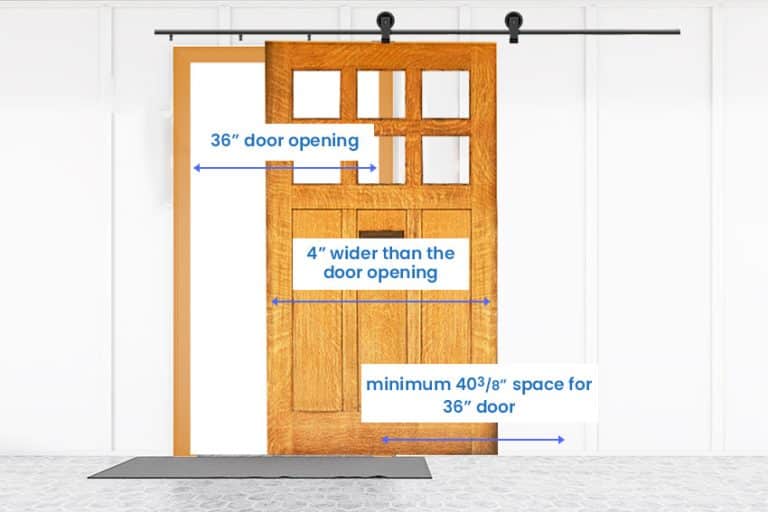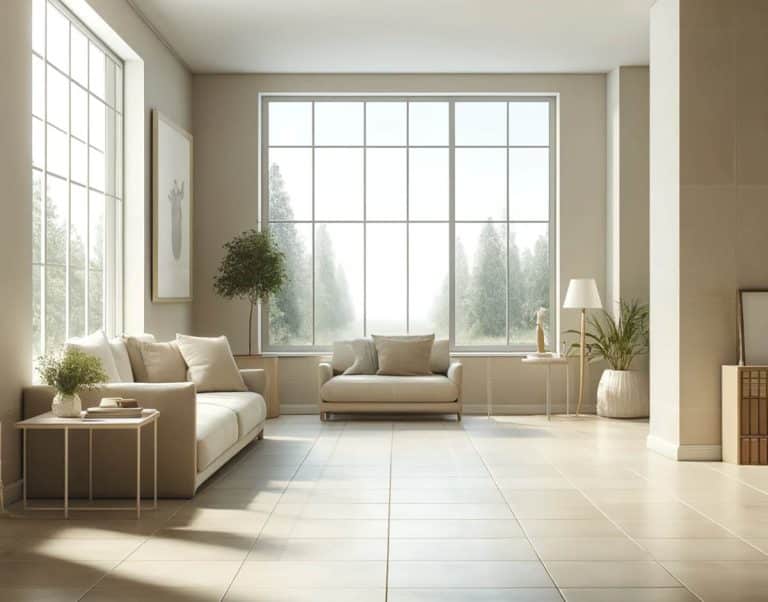Exploring Groutless Tile Pros And Cons & Their Design Options

Dirty grout can be a headache to so many homeowners, and no grout tiles are an excellent solution to this concern. Interior designers have found new modern options that offer seamless high quality results. Let’s dive into its inner workings of groutless tile pros and cons for a seamless and streamlined appearance.
How Does No Grout Tile Work?
No-grout tiles have originated from the principles of precision engineering. These materials are precisely trimmed, calibrated, and manufactured to achieve highly uniform dimensions that can perfectly fit any space. This leads to perfectly cut edges and correct angles, allowing the pieces to fit smoothly and snugly. Since these tiles have very minimal to zero grouts, the entire flooring will result in an uninterrupted and seamless surface that is easier to keep clean.
The following section explains the intricacies of no-grout tiling:
• Extremely Precise Cutting and Manufacturing Process: Unlike traditional tiling, which normally features irregular edges and uneven surfaces, no-grout tiles are cut and manufactured with utmost accuracy so that they fit perfectly and uniformly.
• Uniform Edges: Groutless tiles are professionally engineered and fabricated to have consistent dimensions, eliminating the need for grout to fill the gaps.
• Highly Precise Installation: They are installed by skillful and expert builders only to ascertain an ultra-seamless installation. They also make sure that these types of floor tiles are well-aligned, consistently spaced using specialized spacing tools, and completely level.
• Very Tight Joints: The joints should be very tight to achieve a no-grout tile appearance. Experts normally use certain tools such as wedges and tile-leveling devices to make sure that each tile is flush with the other.
• High-Quality Adhesives: Arranging and placing no-grout tiling uses special adhesives to achieve a durable and flexible bond that can withstand tile contraction or expansion.
Advantages Of Groutless Tiles
Groutless-style tiles provide a vast array of benefits that satisfy the needs and preferences of interior designers as well as homeowners, especially those who aim to have a minimalist aesthetic within their homes.
Easy and Convenient to Maintain: The most common issue of traditional tiles with grouting is maintenance difficulties. Those grouts are prone to dirt and grime as they can easily accumulate between those gaps. If you are not going to clean them immediately, the dirt and grime may start to solidify in those grouts, making cleanup complicated and a hassle.
Mopping, vacuuming, and sweeping are all that’s needed to clean these surfaces effectively – there’s no need for more vigorous ways of cleaning like tedious scrubbing or using harsh chemicals.
Hygienic Flooring Option: As aforementioned, there is no room for germs, bacteria, and other harmful organisms to grow and stay on the seamless surfaces. Traditional tiling with grout lines can easily trap such elements. However, since a solid surface without grooves is not prone to dirt or grime accumulation and simplifies cleaning tasks, the surface undoubtedly remains hygienic and safe to use.
Because of that, they may be among the best options in environments that require consistent cleanliness and proper hygiene, such as restaurants, food establishments, or healthcare facilities.
Seamless and Simplistic Aesthetics: Groutless tiles, as mentioned above, have an uninterrupted surface, which can impart a hint of elegance and minimalism to the space where they are installed. Since crevices are present, a visually continuous surface expanse is produced, and no distracting grids are observed.
The result? Clean, sophisticated, and simplistic aesthetics that match modern decors. Minimalist home designs are becoming very popular these days; thus, adding a seamless surface can greatly complement your overall decor.
Provides Spacious Visual Trick: This pro is another thing that makes this a unique flooring option – yes, they provide a spacious illusion. If your current living space, whether it is a bathroom, living room, or bedroom, has a smaller space, installing this style can help make the entire space look more spacious since there are no grout lines to break up the look.
The visual effect that the style provides evokes a sense of openness and airiness, maximizing the perception of a particular space. The design strategy it gives allows homeowners and guests to move their eyes naturally across the entire space without obstructions caused by grout lines.
It especially works well with stone-look tiling to get that luxurious bookmatched effect, like the surface is one huge slab.
Maximum Resistance to Moisture: If you are looking for a flooring option for your bathroom or kitchen, groutless tiles may be a smart option due to their exceptional moisture resistance.
Because there are no crevises where moisture damage may start, there is no risk of getting mold and mildew growth. The surface is extremely non-absorbent, which helps resist the infiltration of water or any moisture-related issues.
Quicker to Install than Traditional Tiles with Grout Lines: Since no-grout tiles are already precisely measured, cut, and fabricated, the installation, although necessitates expertise, would be quicker. This means that labor costs are also reduced.
Regarding traditional tile with grout lines, they normally need proper spacing adjustments, a one-by-one placement, thorough its application, and curing duration. On the other hand, seamless installations can be already placed by an expert in their respective rooms efficiently and swiftly without meticulously spacing each tile, applying grout, or placing them one by one.
Colorful tiles are fun to look at and they can be used to effectively complement unconventional design choices. – Black & Decker The Complete Guide to Ceramic Tile, Third Edition, Carter Glass
Vast Variety of Designs and Colors: By installing this style, you won’t be limited to a certain number of designs or colors. These materials are available in a myriad of materials, designs, and colors, making sure that every homeowner or interior designer can achieve their desired design theme accurately and creatively.
Disadvantages Of Tiles With No Grout
Groutless tiles are not without drawbacks. Like any seemingly ideal and perfect flooring option, they also have potential disadvantages that may discourage homeowners and designers from choosing them.
Susceptibility to Cracking and Chipping: Groutless tiling when improperly placed, may be more prone to cracking and chipping than yhe alternative. With traditional tiles with grout lines helps absorb impact and stress, making them ideal for areas with high foot traffic.
However, the absence of grouting makes them more vulnerable to external impacts that may cause them to crack and chip. So, generally speaking, groutless applications should not be attempted in areas with high-traffic areas or any space where falling heavy objects may likely always happen.
Groutless Tiles Should be Installed on a Completely Even Foundation: If you are going to install these materials on an uneven surface or foundation, surface and flooring issues may arise, leading to irregularities and potential cracks. Take note that installing these tiles requires a perfectly even substrate.
In some cases, to achieve a faultless installation, the installer must perform substrate smoothing or proper floor leveling. Sadly, this could add more time and cost to the construction project.
Costly Installation Expenses: As mentioned above, groutless tiles necessitate professional, precise, and skillful cutting and installation processes, which translates to higher installation and labor expenses. Placing them requires thorough attention to detail to ensure the pieces are laid seamlessly. So, laying tile designs without grout is not a simple DIY project; instead, it is a project that would need the assistance of a tiling expert.
More Slippery When Wet Compared to Traditional Tiles with Grout Lines: Without those grout lines that can help reduce the slipperiness of floors, the tiles may become more slippery when wet, which can pose a safety concern in wet areas like bathrooms or kitchens.
So if you have household members with mobility issues or physical limitations, installing these in bathrooms or kitchen flooring may be unsafe for them. The common solution to this dilemma is to place anti-slip coatings or treatments like rubber mats to reduce the risk of slipping and falling.
Difficult and Costly to Replace: In the unfortunate occurrence of severely damaging your flooring, the replacement process and cost may be more inconvenient and pricier compared with traditional grouted tiles.
With traditional tiles that need grouting, if one gets severely damaged, all you have to do is replace that particular piece without having to disturb the neighboring tiling.
Even so, it’s a totally different story with groutless tiles. These materials are generally installed as larger sheets or as a complete panel, so once severe damage happens, you might have to consider removing and replacing the entire sheet or panel, which is more expensive and labor-intensive.
Types Of Grout-Free Tile Materials
There are several tile materials that work efficiently in groutless tile installations, such as:
• Porcelain Tiles: Porcelain is the ultimate option in terms of durability and ease of maintenance. This material is designed to withstand major foot traffic. Plus, porcelain is available in a wide array of designs, finishes, and patterns, allowing designers and homeowners to achieve different aesthetics such as natural stone-, granite-, or marble-like appearance.
• Ceramic Tiles: Ceramic is versatile enough to function not only as floors but as walls as well. Also, if you want to achieve artful and creative design possibilities with your no-grout surfaces, ceramic tile would be an ideal pick since it is obtainable in a spectrum of textures, colors, and patterns.
• Laminate Tiles: If you want the appearance of hardwood floors but want the convenience and ease of upkeep, consider installing laminate. This unique material is ideal for homeowners on a tight budget since it is affordable. Plus, if you want to achieve rustic or farmhouse decor in your house, using laminate would be the smartest choice.
• Vinyl Tiles: Among the materials in this list, vinyl is considered the most affordable and cost-effective. Vinyl tiles are quite durable enough to withstand heavy foot traffic. Additionally, if you are looking for a seamless design that have a comfortable underfoot, vinyl is the way to go.
Can You Use No-Grout Tile In A Shower?
Yes, no-grout tiles can be a decent option for shower areas due to their excellent resistance to moisture and mold and mildew buildup. These designs can also greatly contribute to modern and sleek bathroom shower styles.
However, as we stated earlier, no-grout tiles become more slippery when wet than the alternative. Without grout lines that provide slip resistance in shower areas, it may slightly increase the risk of slipping and falling, which is a safety concern.
Aside from that, this installation technique, especially when using materials like porcelain or ceramic, may be colder underfoot. However, these issues can be solved if you use anti-slip treatments such as water-resistant rubber mats on top of your surface.
This can highly reduce the risk of slipping and add a warmer and more comfy underfoot. But overall, groutless shower walls and floors are generally a good idea as they are very easy to maintain and keep clean.
Is Going With A Tile Without Grout A Good Idea?
Generally speaking, installing tile with no grout is a good idea, especially if you want a low-maintenance, visually appealing, and minimalist flooring option. The precise and professional fabrication and fitting of these tiles also add to their appeal to homeowners and interior designers as well.
Nonetheless, the decision will ultimately depend on your preferences in terms of design, budget, and safety viewpoints. As we discussed earlier, tile without grout has many benefits, but it also has its share of drawbacks. In conclusion, it can be a highly beneficial and rewarding flooring option for both residential and commercial areas.
See more related content in our article about grout vs caulk on this page.

